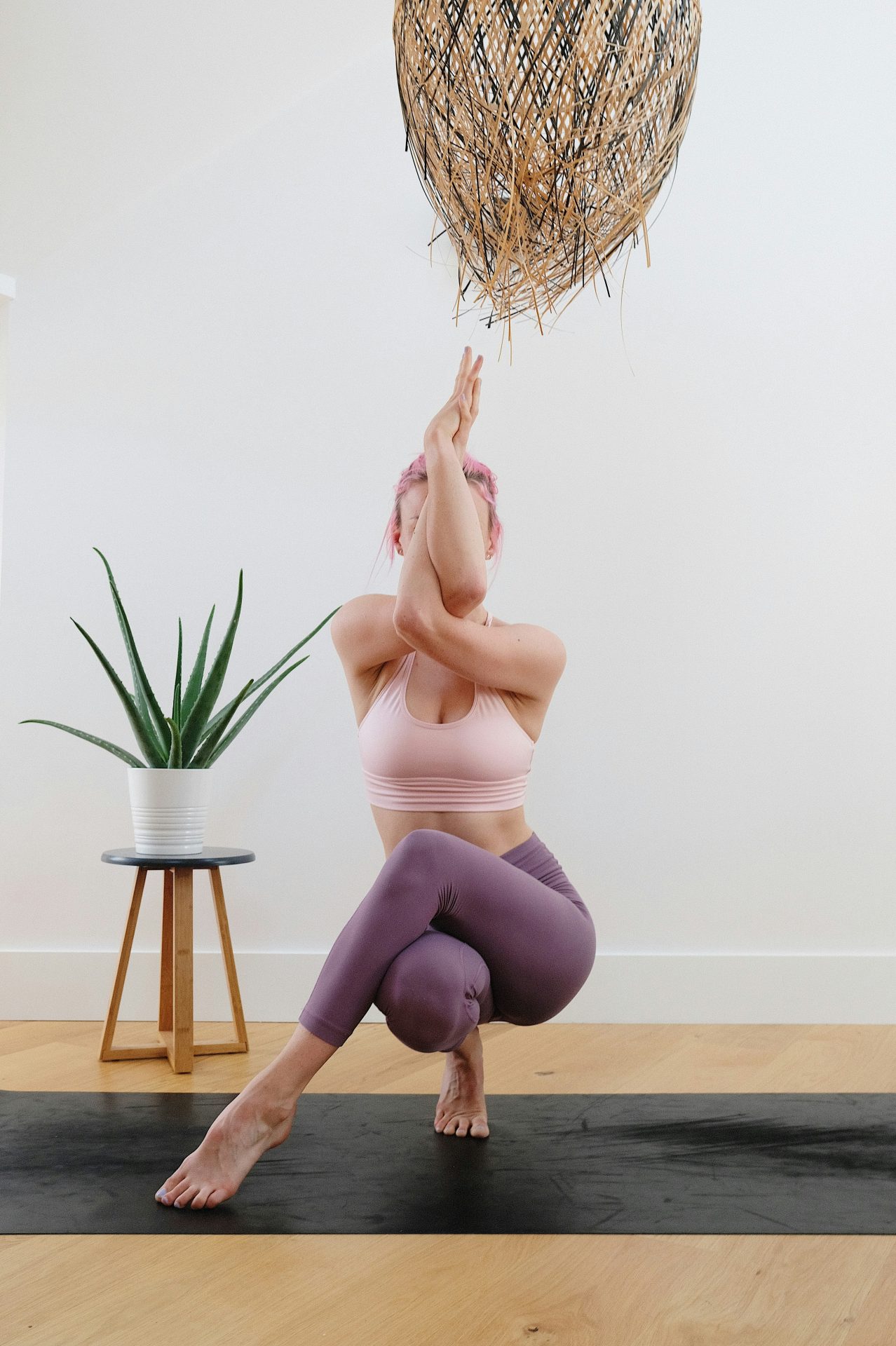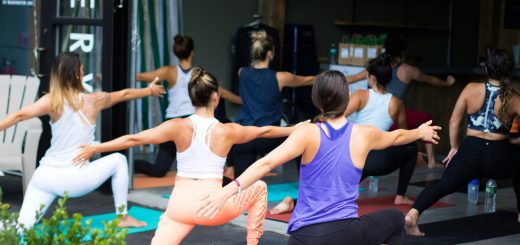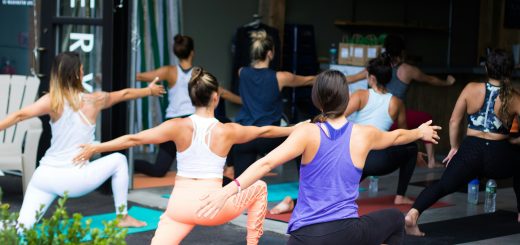Will Yoga Help Back Pain? A Holistic Approach to Healing

Before diving in, please note: This post is for informational purposes only. If you’d like to know more about how we approach topics, feel free to check out our friendly Disclaimer Page.
Hey there, amazing readers! 🖐️ Just a quick note: yes, we know there are a lot of ads here. Trust us, we get it—it’s not the prettiest look, but they help us keep this blog alive and kicking. Those pesky little ads cover the costs of all the behind-the-scenes magic, from hosting and tech stuff to creating content we hope you’ll love.
We’re committed to delivering quality posts, and your support (even just sticking around despite the ads) means everything to us. So, bear with us, and thanks for helping us keep the good vibes rolling. Now, on to the fun stuff! 😉
TRANSLATE BUTTON AT THE END OF THE ARTICLE
A Quick Overview
Back pain is something many of us have encountered at some point in our lives.
It can sneak up on you after a long day at work or hit you hard after lifting something the wrong way.
Whether it’s a dull ache or a sharp pain, back discomfort can take a toll on our daily lives.
So, the question arises: can yoga really help alleviate back pain?
Spoiler alert: it can!
In this article, we’ll delve into how yoga offers a holistic approach to healing, incorporating not just physical practice but also mental well-being and lifestyle changes.
Understanding Back Pain: Causes and Common Symptoms
Back pain can stem from various sources, some of which might surprise you.
Muscular strain, herniated discs, arthritis, and even stress can contribute to that nagging feeling in your back.
Common causes include:
Poor posture while sitting or standing
Sedentary lifestyle and lack of exercise
Injuries from sports or accidents
Overuse or repetitive strain
Age-related wear and tear
Symptoms can vary widely.
While some people might experience a sharp pain that makes it difficult to move, others may feel a dull ache that lingers throughout the day.
It’s essential to listen to your body and recognize these signs.
Common symptoms include:
Persistent pain that lasts more than a few days
Pain radiating down the legs
Stiffness or limited range of motion
Muscle spasms or tension
Understanding these aspects can be the first step to addressing back pain effectively.
Knowing the root causes can help you choose the right practices for relief.
The Link Between Stress and Back Pain: What to Know
Did you know that stress isn’t just a mental state?
It can manifest physically, especially in the back.
When we encounter stress, our bodies tend to tense up, particularly in the shoulders, neck, and back.
This tension can lead to discomfort and even chronic pain.
Here’s how stress can impact your back:
Muscle Tension: Stress can cause muscles to contract, leading to tightness and discomfort.
Poor Posture: When stressed, we might adopt poor postures, like slouching, which can exacerbate back pain.
Inflammation: Chronic stress can trigger inflammatory responses in the body, contributing to pain.
Decreased Pain Tolerance: Stress can lower your threshold for pain, making any back discomfort feel more intense.
Recognizing the connection between stress and back pain is crucial.
By addressing stress through practices like yoga, you can significantly reduce tension and discomfort.
What is Yoga? A Brief Overview of Its Benefits
Yoga is more than just a series of poses; it’s a holistic practice that intertwines physical, mental, and emotional well-being.
Originating from ancient India, yoga combines breath control, meditation, and physical postures to promote health and relaxation.
Here are some key benefits of yoga:
Increased Flexibility: Regular practice can enhance your flexibility and help prevent injuries.
Improved Strength: Many poses build muscle strength, supporting your back and core.
Better Posture: Yoga teaches awareness of body alignment, which can lead to improved posture.
Stress Relief: Incorporating mindfulness and breathing exercises can significantly reduce stress levels.
Enhanced Mood: Many practitioners report feeling happier and more centered after yoga sessions.
Pain Management: Research shows yoga can reduce the perception of pain, making it an effective tool for back pain relief.
Yoga offers a multifaceted approach that can genuinely enhance your quality of life, especially when dealing with back pain.
How Yoga Can Enhance Flexibility and Strength for Relief
Flexibility and strength are two critical components in alleviating back pain.
When our muscles are flexible, they can move more freely, reducing tension and the likelihood of injury.
Likewise, strong muscles support the spine and help maintain proper alignment.
Yoga supports this balance in several ways:
Dynamic Stretching: Many yoga poses involve stretching that gradually increases your range of motion.
Focus on Core Strength: A strong core supports the spine and alleviates pressure on the back.
Balanced Muscle Development: Yoga encourages even strength on both sides of the body, reducing asymmetrical tension that can lead to pain.
For me, the moment I committed to a regular yoga practice, I noticed significant improvements in my flexibility.
I could bend down to tie my shoes without wincing.
Exploring Different Yoga Styles for Back Pain Relief
Not all yoga styles are created equal, especially when it comes to back pain relief.
Some styles focus more on mindfulness, while others emphasize physical endurance.
Here’s a brief overview of popular styles that can benefit your back:
Hatha Yoga: Great for beginners, this style balances physical postures with breath work, making it gentle and accessible.
Vinyasa Yoga: A flow-based practice that links poses with breath.
It can be energizing and is good for building strength.
Restorative Yoga: Perfect for relaxation, this style uses props to support the body in poses, allowing for deep relaxation.
Yin Yoga: Focused on holding poses for extended periods, Yin encourages deep stretching of connective tissues, which can be beneficial for back pain.
Choosing the right style depends on your personal needs and comfort level.
I often recommend trying a few classes to see which one resonates with you the most!
Key Yoga Poses to Alleviate Back Pain Effectively
Some yoga poses are particularly effective for relieving back pain.
Here are some key poses to incorporate into your practice:
Cat-Cow Stretch: This dynamic movement warms up the spine while promoting flexibility.
Child’s Pose: A restorative pose that gently stretches the back, providing relief for tension.
Downward Facing Dog: This pose stretches the entire back and strengthens the arms and legs.
Sphinx Pose: Similar to a gentle backbend, this pose strengthens the lower back while opening the chest.
Pigeon Pose: A great stretch for the hips, which can relieve tension in the lower back.
Make sure to listen to your body and modify poses as needed.
I always say, “Your yoga mat is your playground!” So approach your practice with curiosity and compassion.
Breathing Techniques: A Vital Component of Yoga Practice
Breath is at the heart of yoga.
Proper breathing techniques can enhance your practice and promote relaxation, which in turn can decrease back pain.
Here are a few key breathing techniques to try:
Diaphragmatic Breathing: Breathe deeply into your belly.
This encourages a relaxed state and helps reduce tension.
Ujjayi Breath: This “victorious breath” involves slightly constricting the throat to create a soft sound, helping you focus and calm your mind.
Alternate Nostril Breathing: A technique that balances the nervous system, promoting relaxation and reducing stress.
Integrating breath work into your practice can transform how you feel physically and mentally.
I often find that a few minutes of focused breathing can shift my entire mindset for the day.
Mindfulness and Meditation: Reducing Pain Through Awareness
Mindfulness and meditation are powerful tools for managing pain.
By training the mind to focus on the present moment, we can shift our perception of pain.
Here’s how mindfulness can help:
Pain Perception: Mindfulness can change how we perceive pain, reducing its intensity.
Stress Reduction: Being present helps dissipate stress, which can contribute to back pain.
Increased Awareness: Mindfulness cultivates awareness of body sensations and emotional states, leading to better self-care.
In my experience, dedicating just a few minutes each day to meditation has helped me cultivate a more profound sense of peace and resilience against pain.
The Role of Nutrition in Supporting Back Health
While yoga can work wonders, don’t forget about nutrition!
What we eat plays a significant role in our overall health, including our back health.
Here are some nutritional tips to consider:
Anti-inflammatory Foods: Incorporate foods like berries, fatty fish, nuts, and leafy greens to combat inflammation.
Hydration: Staying well-hydrated keeps the discs in your spine healthy and functioning properly.
Healthy Fats: Omega-3 fatty acids can help reduce inflammation and support overall joint health.
A balanced diet, combined with yoga, can create a comprehensive approach to alleviating back pain.
I’ve found that when I focus on nourishing my body, my overall well-being improves tremendously.
Creating a Holistic Routine: Yoga and Beyond
Healing back pain requires a holistic approach.
Yoga can be a cornerstone of your routine, but integrating other practices can amplify your efforts.
Consider the following elements:
Regular Exercise: Engage in activities like walking or swimming to keep the body moving.
Ergonomic Adjustments: Ensure your workspace is set up to support good posture and minimize strain.
Mindfulness Practices: Incorporate techniques like journaling or guided imagery to support mental health.
Adequate Rest: Make sure you’re getting enough sleep to support recovery.
Creating a routine that encompasses these various elements can provide you with the best chances of relief.
I’ve found that consistency is key—simple changes can lead to significant improvements.
Success Stories: Real-Life Experiences with Yoga Therapy
Hearing about others’ successful journeys can be incredibly inspiring!
Many people have found relief from back pain through yoga.
Here are a couple of examples:
Sarah’s Story: A busy mother of two, Sarah struggled with chronic back pain due to stress and poor posture.
After committing to a regular yoga practice, she not only alleviated her pain but also found a new sense of calm in her life.
Mark’s Journey: An avid runner, Mark faced recurrent back pain after an injury.
Through a combination of physical therapy and yoga, he learned to strengthen his core and enhance flexibility, ultimately returning to his beloved running routine without pain.
These stories remind us that while the journey to healing is personal, we’re not alone.
Yoga can pave the way for recovery and growth.
Getting Started: Tips for Integrating Yoga into Daily Life
If you’re ready to explore yoga for back pain, here are some practical tips to help you get started:
Begin with Online Classes: There are plenty of free resources available online.
Find a beginner class that resonates with you.
Set a Schedule: Consistency is essential.
Try to practice a few times a week, even if it’s just for 10-15 minutes.
Listen to Your Body: Always honor your body’s limits.
If a pose doesn’t feel right, modify it or skip it.
Create a Dedicated Space: Designate a cozy corner in your home for your practice.
Make it inviting with candles or soft lighting.
Join a Community: Consider attending local classes or finding online groups to share your journey with others.
Starting a yoga practice doesn’t have to be overwhelming.
Just take that first step, and before you know it, you could be on your way to feeling better!
Conclusion
In the quest for back pain relief, yoga offers a holistic approach that goes beyond mere physical postures.
By addressing flexibility, strength, stress, and even nutrition, we can create a comprehensive strategy for healing.
The journey may not always be smooth, but with persistence, mindfulness, and a bit of humor, you can navigate the path to relief.
So, will yoga help back pain?
Absolutely!
Each pose, breath, and moment of awareness brings you closer to a life free from discomfort.
Remember, it’s never too late to start.
Grab your mat and let’s flow towards a healthier, happier back!

The Enlightenment Journey is a remarkable collection of writings authored by a distinguished group of experts in the fields of spirituality, new age, and esoteric knowledge.
This anthology features a diverse assembly of well-experienced authors who bring their profound insights and credible perspectives to the forefront.
Each contributor possesses a wealth of knowledge and wisdom, making them authorities in their respective domains.
Together, they offer readers a transformative journey into the realms of spiritual growth, self-discovery, and esoteric enlightenment.
The Enlightenment Journey is a testament to the collective expertise of these luminaries, providing readers with a rich tapestry of ideas and information to illuminate their spiritual path.
Our Diverse Expertise 🌟
While our primary focus is on spirituality and esotericism, we are equally passionate about exploring a wide range of other topics and niches 🌍📚. Our experienced team is dedicated to delivering high-quality, informative content across various subjects ✨.
To ensure we provide the most accurate and valuable insights, we collaborate with trusted experts in their respective domains 🧑🏫👩🏫. This allows us to offer well-rounded perspectives and knowledge to our readers.
Our blog originally focused on spirituality and metaphysics, but we’ve since expanded to cover a wide range of niches. Don’t worry—we continue to publish a lot of articles on spirituality! Frequently visit our blog to explore our diverse content and stay tuned for more insightful reads.






